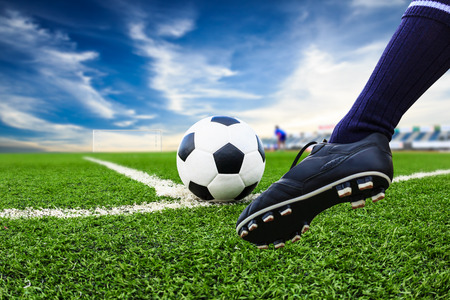Get on top of your Ankle Sprain now!!
Too often we, as Physiotherapists, see patients that have sprained their ankle a few weeks prior and hoped for a “natural recovery”. They are often left with pain, swelling, stiffness and instability, which will not resolve. Many of these problems are avoidable. If they are left untreated, may lead to long term dysfunction in the ankle joint. As specialist in musculoskeletal injury, we know it is vitally important that all ligament sprains (ankle included), are thoroughly assessed and treated AS SOON AS POSSIBLE!!!

How they occur? 90% of ankle sprains are classified as lateral ankle sprains and a typical mechanism of injury is rolling over onto the outside of your foot whilst walking, running or changing direction. An ankle sprain is damage to any of the ligaments around the ankle joint that stabilise the joint by connecting bone to bone. Damage is caused when ligaments are stretched beyond their normal length, resulting in stretching or tearing of the ligament fibres.
Symptoms vary depending on injury severity however they include; swelling, sore to touch, pain with certain ankle movements and walking. Sometimes people are unable walk at all due to pain and need crutches.
Management? No matter how bad your ankle sprain is, it is always important to remember the PRICER principal. This acute injury management prevents secondary injury to the area, thus decreasing injury healing time and overall tissue damage. What does this mean??? You’ll be back to your activities more quickly!
Protect = when you have injured your ankle, it is more susceptible to further injury if not treated corrected. Taping, bracing or bandaging the ankle to protect it from further injury is crucial.
R = Relative rest. Minimise walking on the injured joint. If you are having to limp heavily, it may be appropriate to use crutches which can be obtained from and fitted by a physiotherapy clinic, hospital or local pharmacy.
I = Ice. Apply for approximately 20 minutes every 2-3 hours until swelling has stabilised. Commercially available ice packs or Ice cubes are best.
C = Compression. This is best done with an elastic bandage or compression stocking however thick tight socks may be used until you can get to your physiotherapist.
E = Elevation. Elevate your leg above the level of your heart to minimize swelling. This is best done by lying on your back with your foot on some pillows.
R = Rehabilitation. In order to return you ankle joint to normal function and reduce the risk of injury recu

rrence it is important that you have your ankle assessed and treated by a physiotherapist. We will focus on returning joint range of motion to normal, increasing muscle strength and improving joint proprioception. This may be done by manual therapy, strapping and a graduated exercise program.
If you have injured your ankle recently, or even if your have an old ankle injury that you didn’t treat properly to start with, its never to late to look after it (though earlier is much, much better!!).
At Aushealth Physiotherapy, we will give your ankle the best immediate injury management and guide you through a specialised ankle injury management program.
To organise an appointment online, click here and get back to doing what you love safely without the risk of doing further damage to your ankle.

